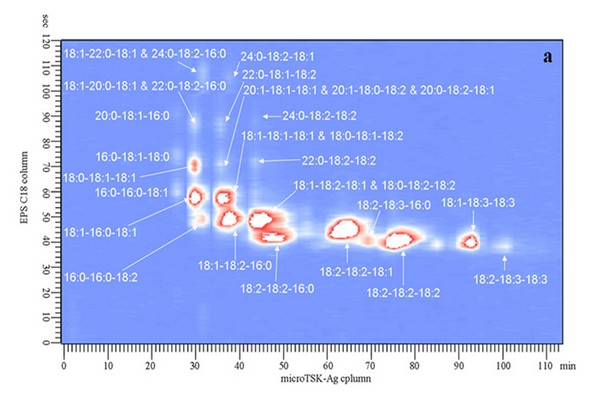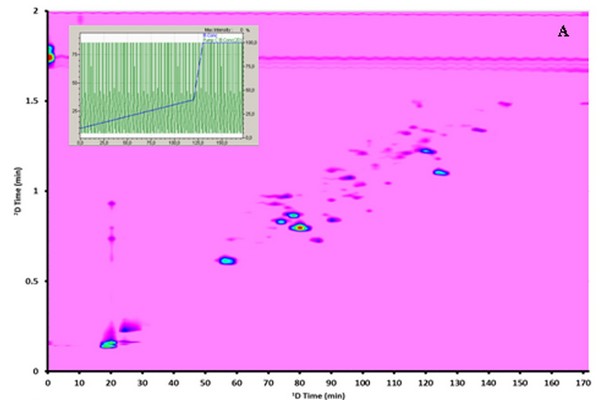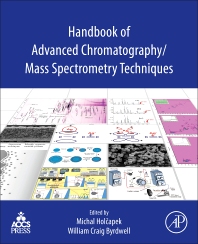
Figure 8.1
Contour plot (lambda = 450 nm) of the NP-LC x UHP-RP-LC PDA analysis of carotenoids in saponified red mamey. NP-LC, normal-phase liquid chromatography; PDA, photodiode array; RP-LC, reversed-phase liquid chromatography; UHP, ultrahigh pressure.
Reprinted with Permission from Springer: Cacciola, F., Giuffrida, D., Utczas, M., Mangraviti, D., Dugo, P., Menchaca, D., Murillo, E., Mondello, L., 2016b. Application of comprehensive two-dimensional liquid chromatography for carotenoid analysis in red mamey (Pouteria sapote) fruit. Food Anal. Methods 9, 2335-2341.

Figure 8.2
(A) Contour plot of comprehensive two-dimensional (2D) silver ion x RPLC separation of peanut oil. (B) A slice of expanded raw chromatogram of the comprehensive 2D liquid chromatography analysis of peanut oil. Triacylglycerols were denoted by the three fatty acids linked to the glycerol backbone, and their positions did not represent the stereochemical positions. RPLC, reversed phase liquid chromatography.
Reprinted with Permission from Elsevier: Yang, Q., Shi, X., Gu, Q., Zhao, S., Zhao, Y., Shan, Y., Xu, G., 2012. On-line two dimensional liquid chromatography/ mass spectrometry for the analysis of triacylglycerides in peanut oil and mouse tissue. J. Chromatogr. B 895-896, 48-55.

Figure 8.3
RP-LC x RP-LC contour plots of a sugarcane leaf extract by means of three different set-up, namely “full in fraction” (FIF, set-up 3A), “segmented in fraction” (SIF, set-up 3B), and “continuously shifting” (CS, set-up 3C) gradients. 1D, first dimension; RP-LC, reversed-phase liquid chromatography.
Reprinted with Permission from Springer: Leme, G.M., Cacciola, F., Donato, P., Cavalheiro, A.J., Dugo, P., Mondello, L., 2014. Continuous vs. segmented second-dimension system gradients for comprehensive two-dimensional liquid chromatography of sugarcane (Saccharum spp.). Anal. Bioanal. Chem. 406, 4315-4324.

Figure 8.4
Contour plot for the online HILIC x RP-LC-UV-MS analysis of a 2013 Pinotage wine obtained at 500 nm. HILIC, hydrophilic interaction liquid chromatography; MS, mass spectrometry; RP-LC, reversed-phase liquid chromatography.
Reproduced with permission from ACS. Reprinted with Permission from Springer: Willemse, C.M., Stander, M.A., Vestner, J., Tredoux, A.G.J., de Villiers, A., 2015. Comprehensive two dimensional hydrophilic interaction chromatography (HILIC) x reversed-phase liquid chromatography coupled to high resolution mass spectrometry (RP-LC-UV-MS) analysis of anthocyanins and derived pigments in red wine. Anal. Chem. 87, 12006-12015.
